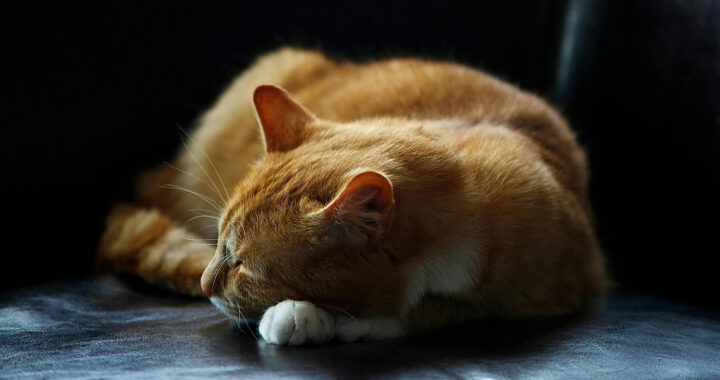For generations, cats have fascinated humans with their mysterious habits, graceful behavior, and unique ways of resting. Cats sleep much longer than most domesticated animals, spending between twelve and sixteen hours each day in slumber. During these long rest periods, researchers have discovered surprising patterns that reveal more about feline survival instincts.
Lateralized Sleeping Positions in Domestic Cats: Evolutionary Significance of Left-Side Sleeping Preference and Evidence for Neurological Asymmetry
Background
Domestic cats do not simply curl up and drift into sleep without purpose. Their choices regarding posture, placement, and orientation reflect layers of instinct. Observant pet owners and experts in rearing cats may notice preferred sides or positions, but science now offers insight, suggesting that such resting patterns may be deeply tied to survival mechanisms.
The recent discovery that most cats prefer to sleep on their left side emerged from an unusual but extensive scientific study. A team of behavioral neuroscientists and biologists analyzed hundreds of publicly available videos. Their objective was to determine whether the sleeping positions held any evolutionary or neurological explanation connected to survival strategies.
Led by neuroscientist Onur Güntürkün of Ruhr University Bochum in Germany, the study, which was published in July 2025, focused on 408 carefully chosen online videos showing cats visibly sleeping on one side for at least ten seconds. Videos of poor quality or altered orientation were excluded to ensure accurate observation and meaningful results.
Findings
The findings were striking. 42 percent of the cats analyzed, which translated to 266 of the 408 cats, were found to rest on their left side. Only 142 cats were observed sleeping on the right. The almost consistent sleeping position and pattern revealed a statistically significant preference that required deeper exploration of feline physiology and neural processing.
Researchers note that the explanation lies in the architecture of the brain and the concept of lateralization. When a cat rests on its left side, the left visual field remains unobstructed and active. This field communicates directly with the right hemisphere, which specializes in detecting threats, maintaining spatial awareness, and coordinating rapid escape responses.
Domestic cats, like many animals, remain vulnerable while sleeping, especially during their deeper sleep phases when awareness of predator risks and overall environmental situation is greatly reduced. Hence, by positioning themselves to keep the left visual field active, cats increase the chance of perceiving danger quickly and reacting with instinctive defense.
Elevated sleeping locations, such as cat trees, furniture tops, or stacked objects, also contribute to security. Cats combine their preference for leftward resting with vantage points that allow broader visibility. This combination enhances survival, blending neural efficiency with practical behavioral strategies developed through thousands of years of evolution.
Takeaways
The team noted that their discovery shows evolutionary influences on daily feline behavior. While brain lateralization provides an explanation, the scientists noted that additional environmental or physiological factors might also shape the pattern. Nevertheless, the strong evidence suggests an adaptive behavior designed to maximize safety during vulnerability.
Further details are discussed in the paper published in June 2025 in the journal Current Biology. It involved collaboration between institutions in Germany, Italy, Canada, Turkey, and Switzerland. The involvement of an international team underscored the significance of this discovery and the importance of global perspectives in behavioral science and animal science.
This research is a reminder that even the smallest details of animal behavior, such as a cat choosing a side for sleep, can reveal deep evolutionary strategies. For humans observing their feline companions, the knowledge provides not only fascination but also a greater appreciation of the intricate survival instincts embedded within domesticated life.
FURTHER READINGS AND REFERENCES
- Isparta, S., Ocklenburg, S., Siniscalchi, M., Goursot, C., Ryan, C. L., Doucette, T. A., Reinhardt, P. R., Gosse, R., Çıldır, Ö. Ş., Serenella d’Ingeo, Freund, N., Güntürkün, O., and Demirbas, Y. S. 2025. “Lateralized Sleeping Positions in Domestic Cats.” Current Biology. 35(12): R597-R598. DOI: 1016/j.cub.2025.04.043
